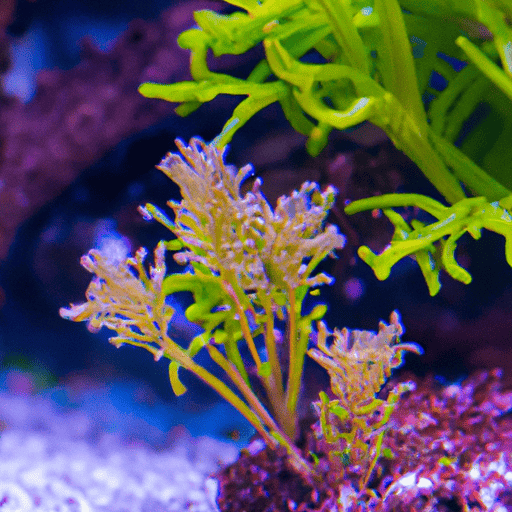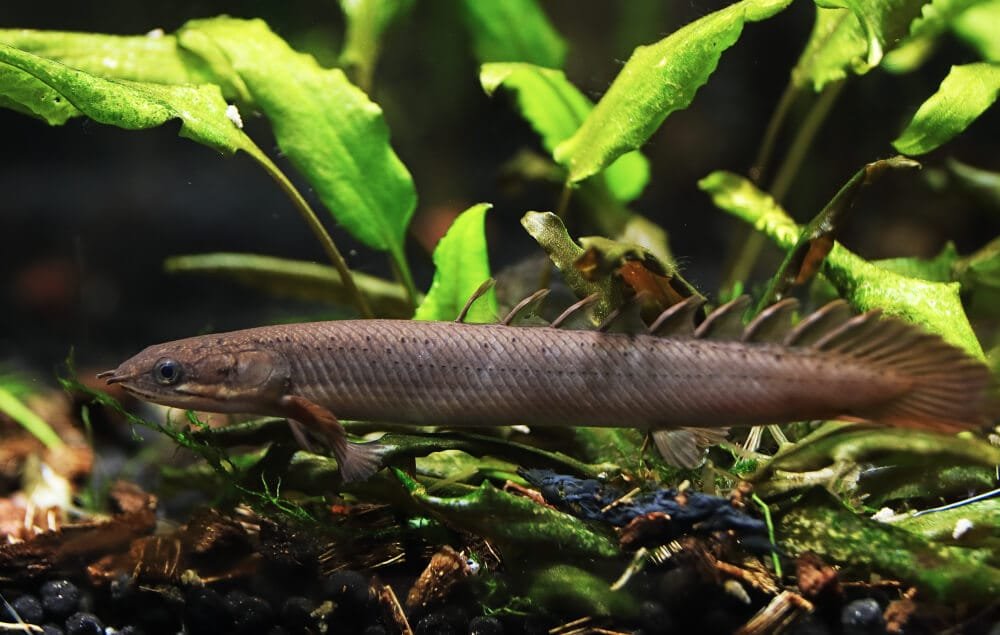Are you tired of constantly dealing with algae taking over your beautiful aquarium? It can be frustrating to see your carefully curated underwater world being invaded by unsightly and stubborn algae growth. But fear not, because in this article, we will explore some simple and effective methods to help you reduce algae growth in your aquarium. Say goodbye to green water and hello to a crystal-clear and thriving aquatic environment.
Understanding Algae Growth
Algae is a common problem encountered by many aquarium enthusiasts. It is a type of aquatic plant that can thrive in various water conditions. Understanding the different types of algae and the causes of their growth is essential in effectively managing and preventing their presence in your aquarium.
Types of Algae
There are several types of algae that can appear in your aquarium, including:
- Green Algae: This is the most common type of algae and can be found in various forms such as hair algae, spot algae, and green water.
- Blue-Green Algae: Also known as cyanobacteria, this type of algae forms clumps or mats and can release toxins harmful to fish and plants.
- Brown Algae: Often referred to as diatoms, this algae appears as a brown film or coating on aquarium surfaces.
- Red Algae: Known for its red or purple coloration, red algae can be challenging to remove once established.
Causes of Algae Growth
Algae growth in your aquarium is influenced by various factors. Understanding these causes will help you identify the underlying issues and take the necessary corrective measures. Some common causes of algae growth include:
- Excessive Lighting: Algae thrive in the presence of excessive light, particularly if it is left on for extended periods. Direct sunlight exposure can also contribute to algae growth.
- Nutrient Imbalance: Algae need nutrients to grow, and an imbalance in the nutrient levels of your aquarium can promote their growth. High levels of nitrates and phosphates are particularly favorable for algae.
- Overfeeding: Overfeeding your fish can lead to excess organic waste in the aquarium, which serves as a nutrient source for algae.
- Poor Water Quality: Inadequate filtration, irregular water changes, and poor maintenance practices can lead to poor water quality, creating an environment conducive to algae growth.
Preventing Algae Growth
Prevention is key when it comes to managing algae growth in your aquarium. By following a few simple steps, you can maintain a healthy and balanced ecosystem that discourages algae proliferation.
Maintain Proper Lighting
To prevent excessive algae growth, it is essential to provide the right balance of lighting for your aquarium. Avoid leaving the lights on for prolonged periods and consider using a timer to control the lighting duration. Furthermore, make sure to place your aquarium away from direct sunlight, which can contribute to algae growth.
Manage Nutrient Levels
Keeping a check on nutrient levels is crucial in preventing algae growth. Regularly test the water quality and monitor the levels of nitrates and phosphates. If the levels are high, consider using chemical filtration media or adding plants that can absorb excess nutrients.
Avoid Overfeeding
Feed your fish in moderation to avoid overfeeding, as uneaten food can decompose and release excess nutrients into the water. Develop a feeding schedule and remove any uneaten food after a few minutes to prevent it from becoming a food source for algae.
Regular Water Changes
Regular water changes are essential for maintaining a healthy aquarium and preventing algae growth. Aim to change approximately 10-20% of the water every 1-2 weeks, depending on the size of your aquarium and its inhabitants. This will help remove accumulated organic waste and control nutrient levels.
Controlling Algae Growth
Despite your best efforts, algae growth may still occur in your aquarium. In such cases, there are various methods you can employ to control and manage algae.
Introduce Algae-Eating Fish
Adding algae-eating fish, such as Siamese algae eaters or plecos, can be an effective way to control algae growth. These fish species have a natural appetite for algae and can help keep it under control. However, it is essential to research the compatibility and specific care needs of the fish before introducing them to your aquarium.
Use Algae Control Products
There are numerous algae control products available in the market that can help combat excessive algae growth. These products typically contain chemicals or enzymes that target and eliminate algae. However, it is important to carefully follow the instructions provided and use these products sparingly, as overuse can harm your aquarium’s ecosystem.
Implement a UV Sterilizer
A UV sterilizer can be a valuable tool in controlling algae growth. This device uses ultraviolet light to kill algae cells and remove free-floating algae from the water. By reducing the algae population, a UV sterilizer can significantly inhibit their growth and help maintain a clear and algae-free aquarium.
Scrubbing and Manual Removal
Regularly inspecting and cleaning your aquarium can prevent the excessive buildup of algae. Use a soft brush or aquarium-safe algae scrubber to gently remove algae from the glass surfaces. Additionally, manual removal of visible algae from plants and decorations can help control their growth. Be cautious while cleaning to avoid damaging delicate aquatic life.
Creating an Algae-Free Environment
To achieve an algae-free environment, it is important to create optimal conditions for your aquarium inhabitants while keeping algae growth to a minimum.
Choose the Right Plants
Selecting the right plants for your aquarium can help control algae growth. Some plant species, like fast-growing stem plants, absorb excess nutrients and compete with algae for resources. They can prevent the colonization of algae and create a healthier aquatic environment.
Maintain Optimal Water Conditions
Consistently monitor and maintain the optimal water conditions for your aquarium. Regularly test the water parameters such as pH, temperature, ammonia, and nitrite levels, and make necessary adjustments. Providing clean and stable water conditions will create an inhospitable environment for algae growth.
Add Beneficial Bacteria
Introducing beneficial bacteria into your aquarium can help establish and maintain a healthy biological filter. These bacteria assist in breaking down harmful substances, such as excess organic waste, which can fuel algae growth. Consider using bacterial supplements or adding bio-media to enhance the beneficial bacteria population.
Control Water Flow
Proper water circulation is vital in preventing stagnant areas that can promote algae growth. Install an efficient water pump or powerhead to ensure adequate water flow throughout the aquarium. This will help distribute nutrients and oxygen evenly while discouraging algae growth in stagnant areas.
Common Mistakes to Avoid
Avoiding common mistakes in aquarium care can significantly reduce the likelihood of excessive algae growth.
Overusing Algicides
While algicides can be effective in controlling algae, it is essential to exercise caution when using them. Overuse of algicides can harm your aquarium’s ecosystem, including fish, plants, and beneficial bacteria. Always follow the manufacturer’s instructions and use algicides sparingly as a last resort.
Inadequate Filtration
Proper filtration is crucial for maintaining good water quality and preventing algae growth. Ensure that your aquarium’s filter is appropriately sized for the tank volume and properly maintained. Clean or replace filter media regularly to prevent the accumulation of debris and excess nutrients.
Ignoring Water Temperature
Temperature plays a vital role in algae growth. Avoid exposing your aquarium to extreme temperature fluctuations, as this can promote algae growth. Monitor the water temperature regularly and invest in a reliable aquarium heater or cooling system to maintain a stable temperature suitable for your aquatic life.
Neglecting Regular Tank Maintenance
Regular tank maintenance is essential to keep algae growth in check. Neglecting routine tasks such as water changes, filter cleaning, and glass scraping can lead to poor water quality and algae growth. Dedicate time to perform these tasks consistently to create a healthy and algae-free environment.
Conclusion
Algae growth in an aquarium can be frustrating, but with the right knowledge and proactive measures, it can be effectively managed and prevented. By understanding the types of algae, their causes, and implementing strategies to prevent and control their growth, you can create a vibrant and healthy aquarium environment for your aquatic life. Remember to maintain proper lighting, manage nutrient levels, avoid overfeeding, and perform regular water changes. Additionally, consider introducing algae-eating fish, using algae control products sparingly, implementing a UV sterilizer, and manually removing algae when necessary. By following these guidelines, you can create an algae-free environment and enjoy the beauty of your aquarium to the fullest.




